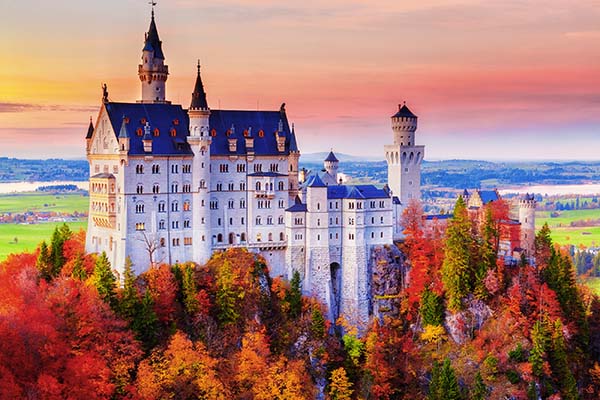Cinderella’s Castle is Recognized as a World Heritage Site
In a historic decision, Cinderella’s Castle, located in southern Germany, was recently recognized by UNESCO as a World Heritage Site. This castle, which for centuries has served as the setting for legends and fairy tales, now stands among the most important cultural heritages in the world. The recognition is a milestone not only for architectural history but also for global popular culture, which has found in it one of the most iconic representations of magic and enchantment.
Cinderella’s Castle, also known as Neuschwanstein Castle, was built in the 19th century by King Ludwig II of Bavaria with the aim of being an architectural masterpiece that reflected the monarch’s idealized vision of medieval beauty and fairy tales. Although it was never fully completed, the castle impresses with its towering spires, carved facades, and breathtaking views of the surrounding mountains.

The recognition as a World Heritage Site crowns decades of efforts to preserve and protect this significant symbol of European history. The castle is not just a feat of engineering but also a place steeped in cultural symbolism, especially due to its connection with the famous Cinderella story. Its fairy-tale beauty and unique architecture have inspired countless cinematic and literary adaptations, becoming an iconic image in the hearts of millions around the globe.
The inclusion of Cinderella’s Castle on UNESCO’s list also underscores the importance of safeguarding our cultural heritage for future generations. The castle already attracted over 1.5 million tourists annually, and with its new World Heritage status, its visitation is expected to increase even further—but with a stronger emphasis on sustainability and preservation. UNESCO has highlighted the need for a balance between tourism and the protection of historical resources, ensuring that the castle’s beauty and history continue to be shared responsibly.
Moreover, the story of Neuschwanstein Castle transcends its construction and architectural beauty. It reflects the complex mind of Ludwig II, a monarch who lived in isolation in his castles and whose artistic ambitions led him to create one of Europe’s most fascinating structures. The castle is also a tribute to Bavaria’s legacy and a window into the medieval and romantic worlds that so deeply captivated the king.

Now officially recognized by UNESCO, Cinderella’s Castle joins other cultural treasures around the world, such as the Great Wall of China and the Pyramids of Egypt. It is not only a reflection of a nation’s history but also a testament to the universality of myths and stories that continue to bring people together, regardless of their geographical or cultural origins.
The preservation efforts for Neuschwanstein Castle ensure that future generations can also experience the magic it offers. Its inclusion as a World Heritage Site further emphasizes the importance of respecting cultural heritage and protecting the symbols that define our evolution as a society.

With UNESCO’s recognition, Cinderella’s Castle solidifies its status as a global icon, where history, culture, and imagination converge. Visiting the castle is now an even more enriching experience, knowing that it is officially acknowledged as one of the wonders of our collective heritage. The castle is not merely a tourist destination but a reminder of the power of history and fantasy, and how they can shape our perception of the world across centuries.












Post Comment